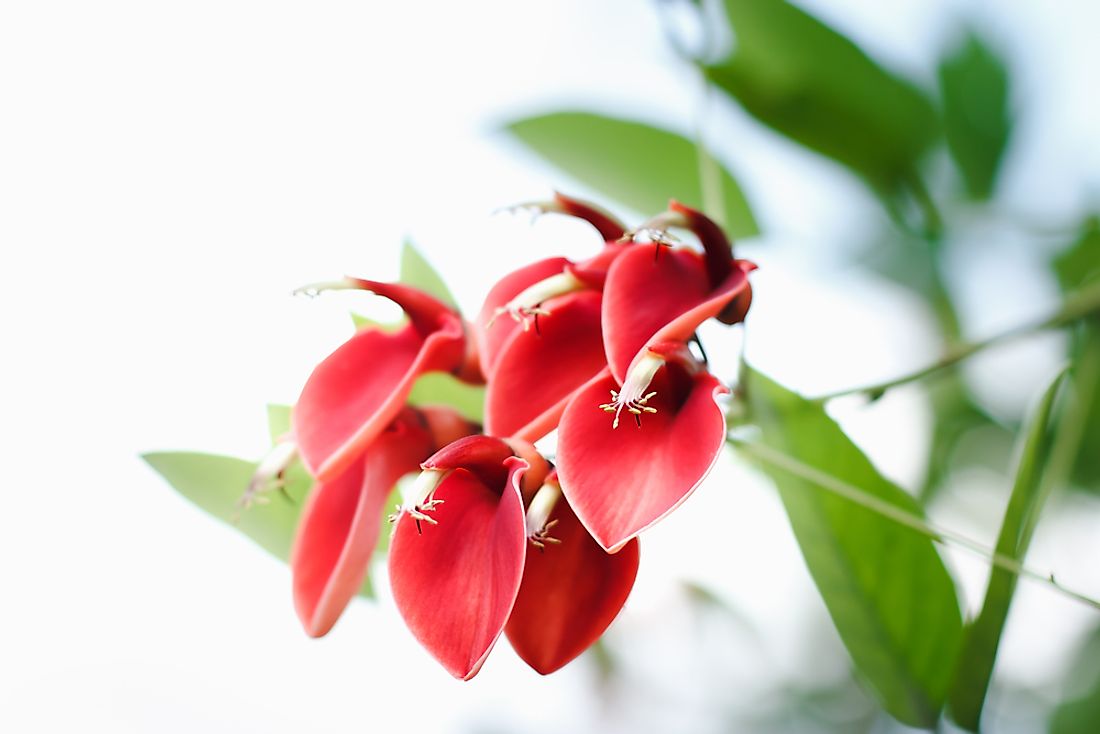Native Plants of Uruguay

Uruguay’s landscape which mainly consists of grasslands has limited the country’s wildlife. The country has fewer forests compared to most of the neighboring South American countries. There are approximately 2,500 plant species in Uruguay distributed among the 150 biological families. The predominant vegetation in the country is tall prairie grass that provides rich pasture. The forest covers only 3% of Uruguay. One of the most outstanding prairies is the small purple flowers which grow in abundance that Uruguay is sometimes referred to as “Purple Land.” This article highlights some of Uruguay’s native plants, their characteristics, and possible use.
Native Plants of Uruguay
Cockspur coral tree - Erythrina crista-galli
Cockspur coral tree is a flowering tree in the family Fabaceae. It is not only native to Uruguay but also Paraguay, Brazil, and Argentina. The flower of the Cockspur coral tree is the national flower of both Argentina and Uruguay. The plant often grows in the wild along a watercourse, swamps, and wetlands. It grows to an average height of 16-26 feet and flowers in the summer. The flowers are red and often arranged in inflorescences of the raceme type.
Humboldt's willow - Salix humboldtiana
Humboldt's willow is a species of willows that grow along the watercourse. The plant is native to both North and South America. Humboldt's willow is evergreen or deciduous and grows up to 25 meters. The crown is either a narrow triangular or columnar. The trunk can grow to a diameter of 80 cm and is often dark brown in color while the leaves are narrow, measuring approximately 15 cm long. Humboldt's willow can grow near sea level to about 10,800 feet of elevation.
Sarandí Colorado - Cephalanthus glabratus
Sarandí Colorado is a flowering coffee plant in the family Rubiaceae. The plant was first described by K Schum. It commonly grows on the riverside and found in large scale along the Parana Delta in Argentina. Sarandí Colorado is a small tree and grows to a height of approximately 3-5 meters. The leaves are 4-8 centimeters long and 1-2 centimeters wide. It flowers in the spring and fructifies in late summer and autumn. The plant is mainly used as ornamental while the bark can be used as a traditional medicine to treat diabetes.
Tala - Celtis tala
Tala is a deciduous tree with small to medium-sized spines. It is a major component of the Gran Chaco Prairies. The tree can grow to a height of 12 meters, and depending on water availability, it can be shrubby or arboreus. Although the fruits are edible, there is no habit consumption nor market for them. Thus, the fruits are mainly part of birds and insects’ diet. Its wood is tough and heavy and is mainly used for fuel.
Threats to Native Plants of Uruguay
Other native plants of Uruguay include the Espina amarilla and Pampas grass. The natural plants of Uruguay have constantly faced threats from agricultural activities and cattle ranching which have altered their natural communities. Introduction of foreign species has also led to near extinction of some of the native species. Because of the severity of these threats, the government of Uruguay has embarked on conservation efforts such as controlling overgrazing and agricultural activities in areas that are most affected
Native Plants of Uruguay
| Rank | Native Plants of Uruguay | Scientific Name |
|---|---|---|
| 1 | Cockspur coral tree | Erythrina crista-galli |
| 2 | Humboldt's willow | Salix humboldtiana |
| 3 | Sarandí colorado | Cephalanthus glabratus |
| 4 | Tala | Celtis tala |
| 5 | Espina amarilla | Berberis laurina |
| 6 | Pampas grass | Cortaderia selloana |











